Remote Work — The New Norm?
A data driven analysis to understand remote work better

I spent the last 3 months working remotely. And probably will for many more months. I thought I would hate it. But it was …different! Google announced its work from home policy for the rest of 2020. Facebook adopted a similar policy. Twitter told its employees they could indefinitely continue working remote. We live at times when the only way to keep the virus at bay is to embed social distancing into our lives. Majority of the workforce has started working remotely to some extent recently. Working from home could make workers happier and save employees and employers money. Is remote work the new norm?
One might have pressing questions regarding working remote and what better way to answer these than uncovering what the data tells us. So I found publicly available data from Annual Developers Survey conducted by Stack Overflow for the year 2019 which consists of responses of roughly 88K developers. So essentially the context here would be relevant for people working in the Software/IT/Data Science industry. Here are some interesting facts I’ve discovered in the data.
Are developers who work remotely more satisfied with the job?
To me this is the most important question, to understand how satisfied are people who work remote with their job.
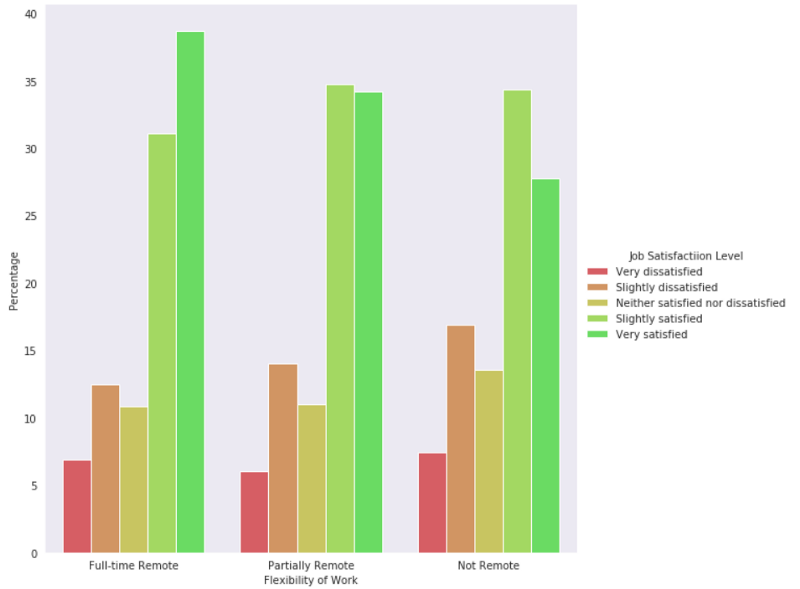
Indeed, majority of the full-time remote workers are very/slightly satisfied with their job! A clear increasing trend of very satisfied employees can be noted from not remote to full-time remote workers. Further I converted the responses to a 5-point Likert scale, to arrive at an average job satisfaction score. A strong positive correlation can be noted with the remote-working culture to the job satisfaction.
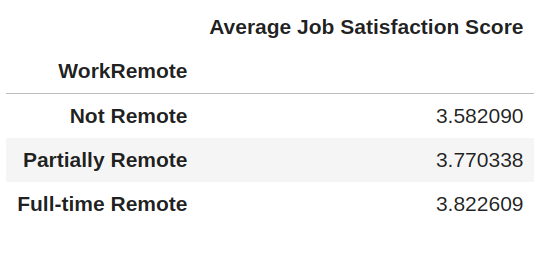
So with the flexibility of working anywhere, developers seem to be more satisfied with their job! Do we really need to go to the office?
Do remote workers earn more?
With pay-cuts handed down to employees in most parts of the world due to the global pandemic, it is important to understand the earnings before arriving at any decisions. Let us compare the pay scales of the developers who work remote with the rest.

The interesting finding is that employees who gets to choose between going to the office and working remote, earn the most on average. Remote workers earn significantly higher than their counterparts.
What are the most common challenges faced when working remotely?
Our findings tell us remote working jobs are actually better — but surely there should be some challenges associated with it. I definitely have had some in the few months that I’ve worked remote, but as always let’s not assume anything but see what our data tells us.
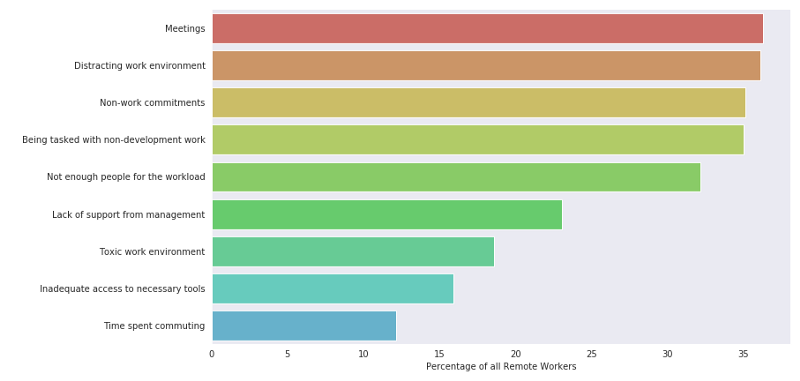
The most common 3 challenges faced when working remote are the meetings, distracting work environment and non-work commitments. Non-work commitments include having to look after children and house-hold work. I certainly have preferred the in-person meetings and have felt distracted at home. However with the rising popularity of various video-conference meeting tools and its capabilities, it would be interesting to analyze the next years annual survey.
In what type of organizations are remote work popular?
By now, if you had made up your mind to find a remote working job, let’s ask the data which type of organizations you should look for.
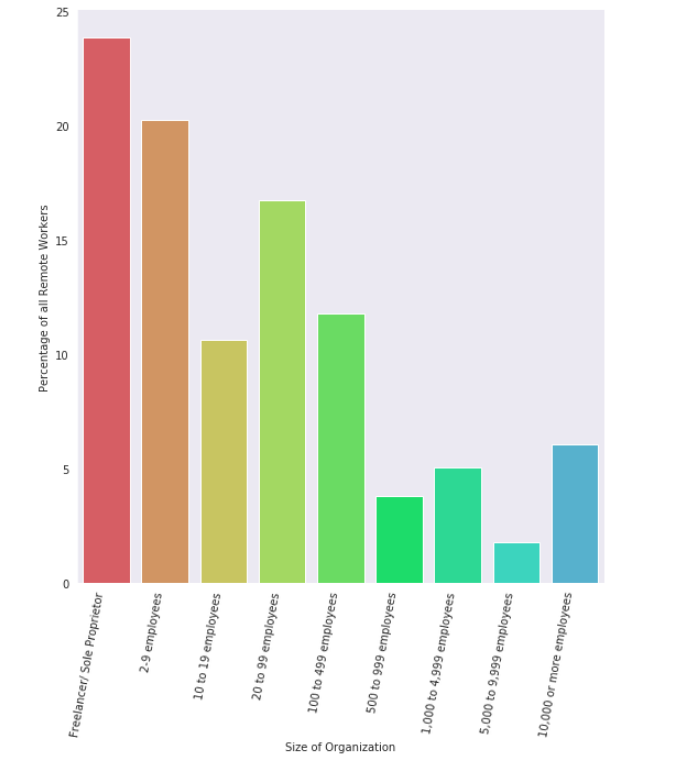
As we analyze the data, we realize that remote-working culture is prevalent among smaller organizations. A remarkable percentage (read ~70%) of remote-workers work in organizations with lesser than 100 employees. So your best bet to work remote would be to join a small organization or start something on your own!
The findings here are observational, and are my findings from the data, not the result of a formal study. So the real question remains:
Remote work — the new norm?
If you have come this far, thank you for reading. What I did above was to subtly apply CRISP-DM, a popular methodology for tackling data science problems. Let’s reveal how this simple methodology was applied to this project. By the end of it, you can start applying it too!
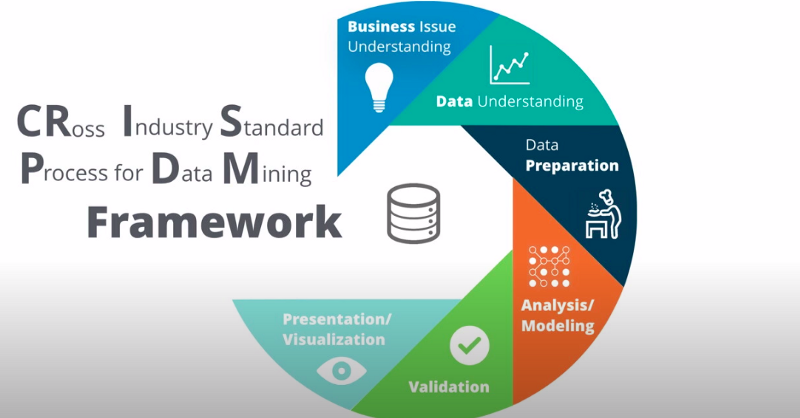
- Business understanding — As I started working remotely I wanted to understand several factors regarding the same, and that motivated me to ask these questions. Most data science problems originate from a set of fundamental questions and it is vital to identify them first.
- Data understanding — Find or collect the data that can answer your business questions. I can’t emphasize enough on spending enough time on understanding the data inside out. That helps in all the following steps more than you would ever realize.
- Data preparation — No raw data has ever been ready to use. Though Stack Overflow provided us the data with basic cleaning, treating outliers, missing values, categorical values are mandatory.
- Analysis/Modeling —Exploratory data analysis was sufficient to answer our questions. However some complex problems may require further modeling, for predictive insights.
- Evaluation — Several statistical tests can be used to evaluate and obtain the results. In case of modeling, evaluation metrics are common in evaluating the performance of the solution proposed.
- Deployment — Some problems require some sort of product to be deployed while some other require the insights to communicated to the stakeholders (exactly what this blog does!). Henceforth maybe I’ll be more open to roles that are full-time remote?
This blog intentionally omitted the complex and detailed analysis including the codes and left them for the GitHub repository, should you need further understanding. Did you find any other interesting insights from the data around remote work? Or did this already convince you to try remote-working jobs? I’d love to hear all sorts of feedback!

